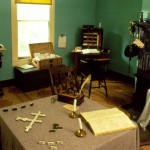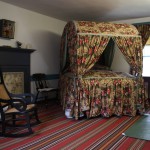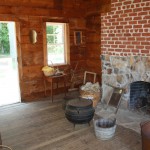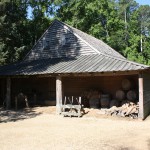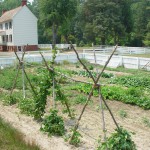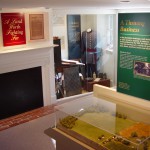The Antebellum South
Life in the Antebellum South and the Impact of the Civil War on Civilians
The American South, the fifteen states that permitted slavery in the decades before the Civil War, was a predominantly rural region. Life revolved around agriculture, much of it conducted on large farms or plantations where enslaved African Americans provided the majority of the labor. In Virginia, tobacco had dominated farm production, although by the 1850s a more diversified agriculture had taken root.
Southern farms did more than produce crops. They served as the setting for a complex system of laws and customs by which whites and blacks co-existed in a tenuous bi-racial society largely unknown north of the Mason and Dixon Line. The Civil War disrupted that system in countless ways and affected the lives of white and black Southern civilians as much as it did those who served in uniform.
Tudor Hall Plantation
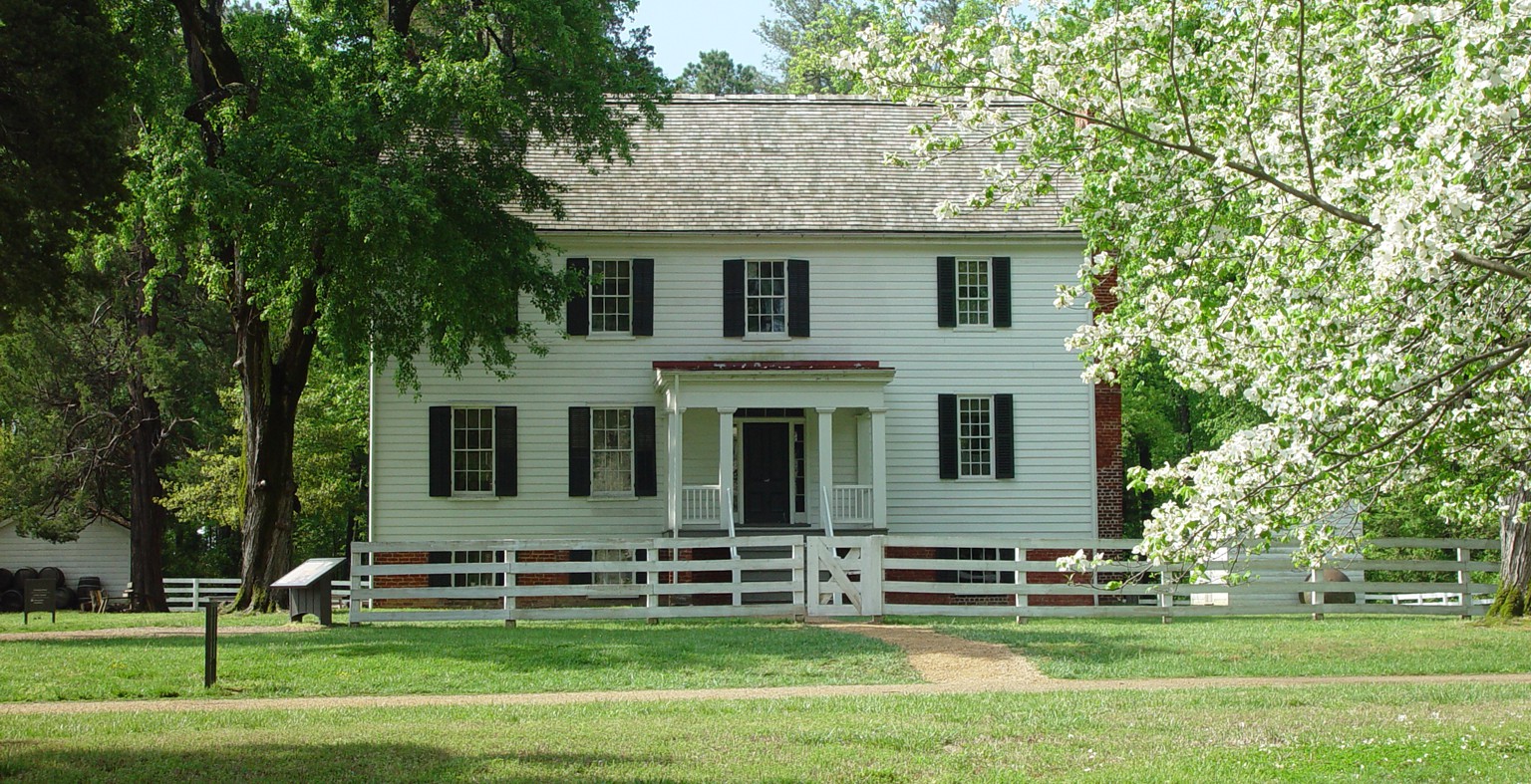 Down a short path from the National Museum of the Civil War Soldier lies Tudor Hall Plantation. This simple but elegant home, built circa 1812, has been carefully restored to its wartime appearance and furnished with period antiques. The dwelling was home to the Boisseau family, ancestors of the Pamplins, and from October 1864 to March 1865 served as military headquarters for Confederate General Samuel McGowan.
Down a short path from the National Museum of the Civil War Soldier lies Tudor Hall Plantation. This simple but elegant home, built circa 1812, has been carefully restored to its wartime appearance and furnished with period antiques. The dwelling was home to the Boisseau family, ancestors of the Pamplins, and from October 1864 to March 1865 served as military headquarters for Confederate General Samuel McGowan.
Tudor Hall’s furnishings reflect both its civilian and military history. The west side of the house is furnished as the Boisseau family would have known it. The east side is outfitted to suit the needs of a Confederate general and his staff. Begin your visit to Tudor Hall in the English basement, where a display entitled “A Land Worth Fighting For,” explores the Southern agrarian way of life as well as Tudor Hall’s unique history.
The plantation also features a reconstructed working kitchen and slave quarter, a kitchen garden with authentic period plantings, and reconstructed livestock and tobacco barns. Costumed interpreters periodically demonstrate domestic skills in the kitchen and around the “big house.” Use your mp3 player for a personalized audio tour of Tudor Hall Plantation or join a Pamplin Historical Park historian on the daily guided tour.
Discover woodworking equipment and farm animals at the Tudor Hall barn. A tool shed, sharpening stone, and shaving horse are on display as well as a chicken coop and sheep pen. Nanking Bantam chickens and Gulf Coast Native sheep add sounds and smells that bring the plantation alive.
The Field Quarter
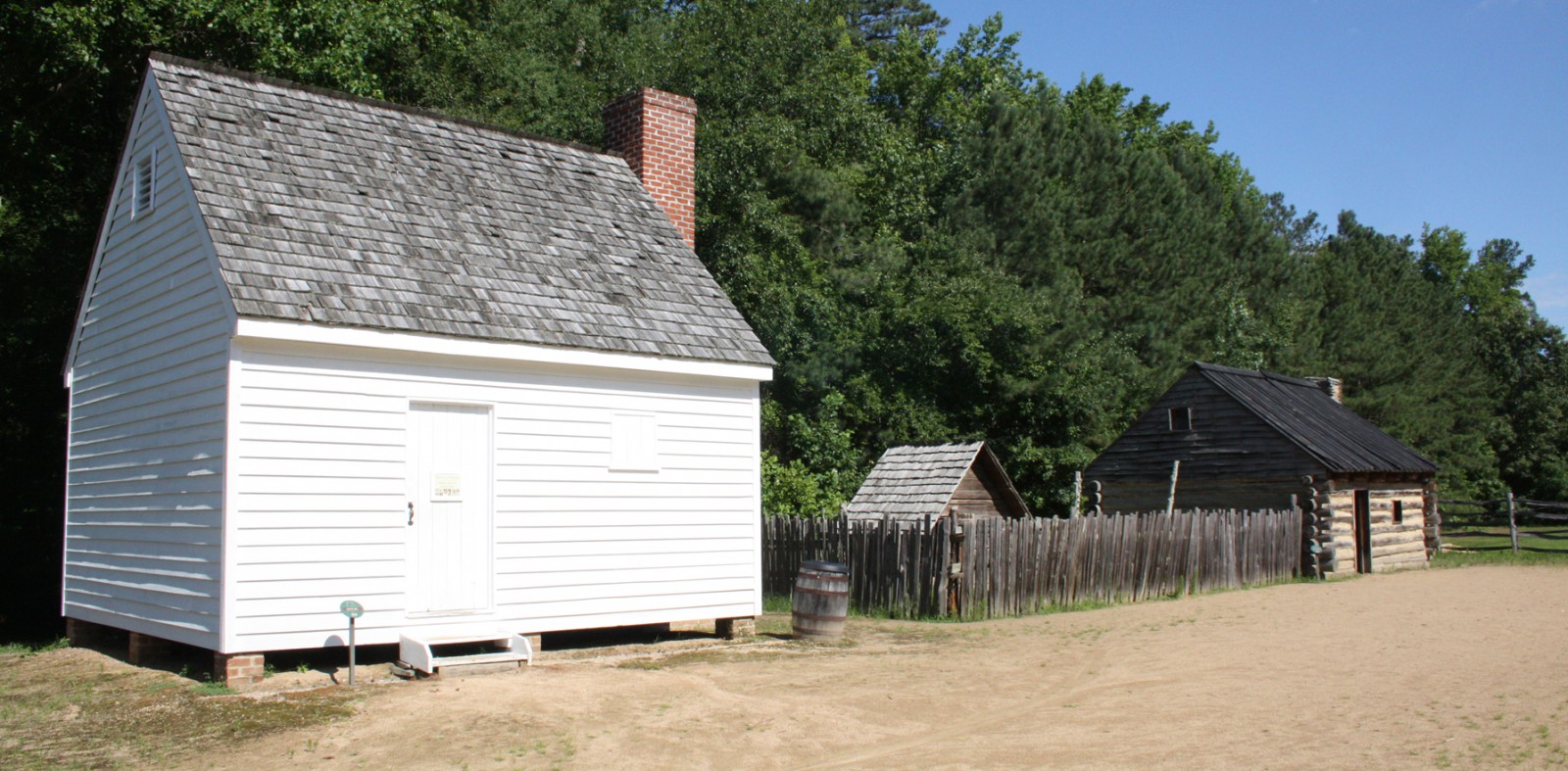 Southern plantations and large farms segregated the homes of agricultural slaves in an area the planters called the field quarter. Pamplin Historical Park has recreated elements of a typical field quarter to illustrate aspects of slave life in the antebellum South. Visitors will find reconstructed dwellings, antique livestock breeds, a garden, and a modern museum exhibit that focuses on presenting a candid picture of slavery in America on the eve of the Civil War.
Southern plantations and large farms segregated the homes of agricultural slaves in an area the planters called the field quarter. Pamplin Historical Park has recreated elements of a typical field quarter to illustrate aspects of slave life in the antebellum South. Visitors will find reconstructed dwellings, antique livestock breeds, a garden, and a modern museum exhibit that focuses on presenting a candid picture of slavery in America on the eve of the Civil War.
Inside one of the cabins is a sit-down theatre that features a video entitled “Slavery in America: Viewpoints of the 1850s.” The video introduces visitors to six fictional characters of that decade who speak frankly about their opinion of slavery. Adjacent to the Field Quarter, demonstration fields illustrate the growing of Virginia’s most popular crops in the years before the Civil War such as tobacco, wheat, and corn. Visitors are invited into a furnished log slave cabin and asked to contrast it with the kitchen quarter reconstructed next to the “big house,” illustrating the social stratification that existed among enslaved people prior to the Civil War.
The Banks House
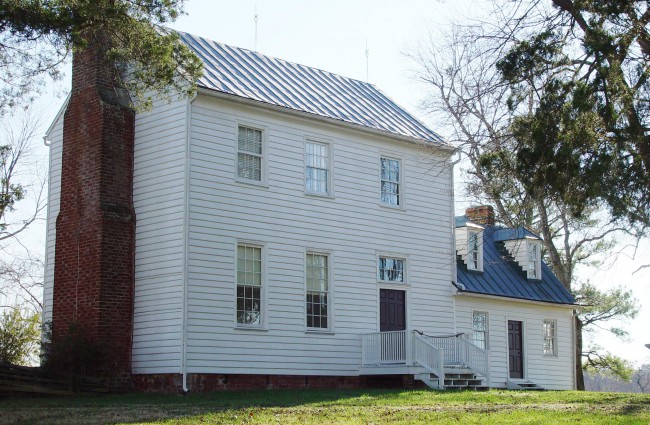 The Banks House, which served as Lt. Gen. Ulysses S. Grant’s headquarters following the Breakthrough on April 2, 1865, is one of the Park’s historical treasures and an outstanding story of preservation as well. The exterior of the house has been restored to its 1865 appearance. The interior of the house is used as a residence for Park employees.Please respect their privacy.
The Banks House, which served as Lt. Gen. Ulysses S. Grant’s headquarters following the Breakthrough on April 2, 1865, is one of the Park’s historical treasures and an outstanding story of preservation as well. The exterior of the house has been restored to its 1865 appearance. The interior of the house is used as a residence for Park employees.Please respect their privacy.
History & Preservation
This Federal-style building was built in two stages. The one-and-a-half story structure to the west was completed between 1740 and 1760 and the larger, two-story wing was added about 1790.
In the fall of 1864, the landscape around Margaret Banks’s 231-acre farm changed when Petersburg became the focus of conflict in the Civil War’s Eastern Theater. Gen. Robert E. Lee, seeking to protect his lines of communication to the south and west of Petersburg, extended his main line of defense southwest of the city. Confederate soldiers dug an imposing line of earthworks just south of the Banks House. A Confederate general, James Lane, used the yard of the Banks House as his headquarters. This line was overrun by Union troops on the morning of April 2, 1865, forcing Lee to abandon his entire position around Petersburg and Richmond.
Pamplin Historical Park acquired the Banks House parcel as a gift from Roslyn Farms Corporation. TXI Corporation donated $75,000 to assist in the $600,000 restoration project.
General Grant’s Headquarters
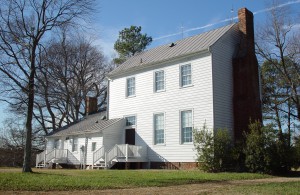 Lt. Gen Ulysses S. Grant chose the Banks House as his command post on the morning of April 2, 1865 because it provided him a vantage point from which to observe and direct assaults against the western sector of Gen. Robert E. Lee’s inner defensive lines. General Grant dispatched a telegraph message to Maj. Gen. George Meade, immediately in command of the Army of the Potomac, that read, “Hd Qrs armies U.S. will be at Banks House, north of [F] ort Fisher and near the Boydton Plank Road.” By 10:45 that morning, dispatches from Grant bore the address “T. Banks’ House.”
Lt. Gen Ulysses S. Grant chose the Banks House as his command post on the morning of April 2, 1865 because it provided him a vantage point from which to observe and direct assaults against the western sector of Gen. Robert E. Lee’s inner defensive lines. General Grant dispatched a telegraph message to Maj. Gen. George Meade, immediately in command of the Army of the Potomac, that read, “Hd Qrs armies U.S. will be at Banks House, north of [F] ort Fisher and near the Boydton Plank Road.” By 10:45 that morning, dispatches from Grant bore the address “T. Banks’ House.”
General Grant was known as stoic, deliberate and imperturbable, especially under fire. Confederate gunners, spotting the knot of Federal officers in the yard of the Banks House, began lobbing artillery shells at the group. As exploding missiles fell about the landscape, Grant sat on the ground writing out dispatches, ignoring the pleas of his staff to move to a place of safety. Once finished with his work, Grant arose and walked away, remarking to his aide, “Well, they do seem to have the range on us.”
Original Slave Quarters and Kitchen
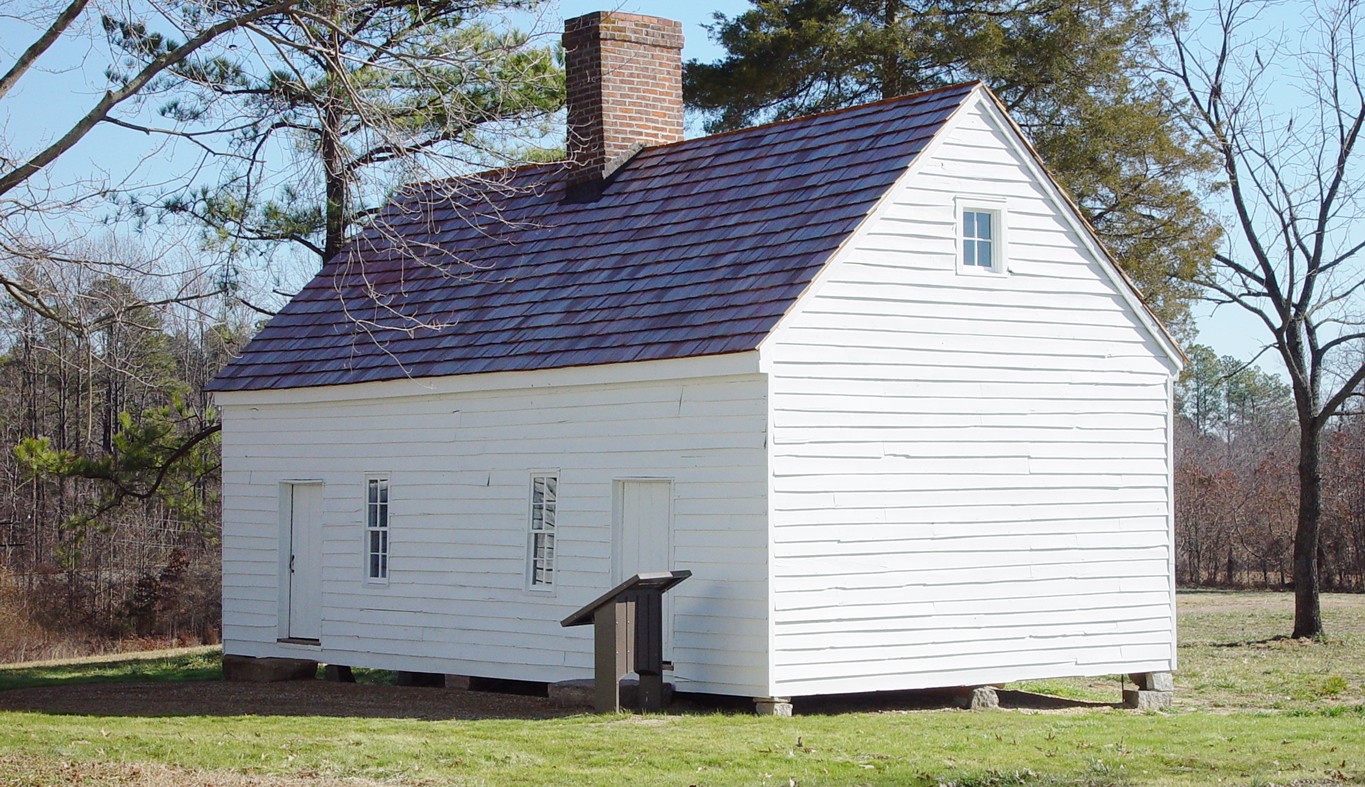 One of the few remaining original slave dwellings in Virginia is located behind the Banks House. The four-room building includes two rooms on the bottom floor that were used as the plantation kitchen and laundry. The upper floor contains two rooms that were the living quarters of the house servants.
One of the few remaining original slave dwellings in Virginia is located behind the Banks House. The four-room building includes two rooms on the bottom floor that were used as the plantation kitchen and laundry. The upper floor contains two rooms that were the living quarters of the house servants.
This structure has been restored to its wartime appearance. Access to the interior of the Slave Quarter and Kitchen is offered by prior arrangement.
Visiting the Banks House
A visit to the Banks House is included with regular Park Admission. Visitors should obtain the daily code at the Admissions Desk in the National Museum of the Civil War Soldier which may be used to open the Banks House access gate. Exterior exhibits explain the history of both the main house and kitchen.
The Hart Farm
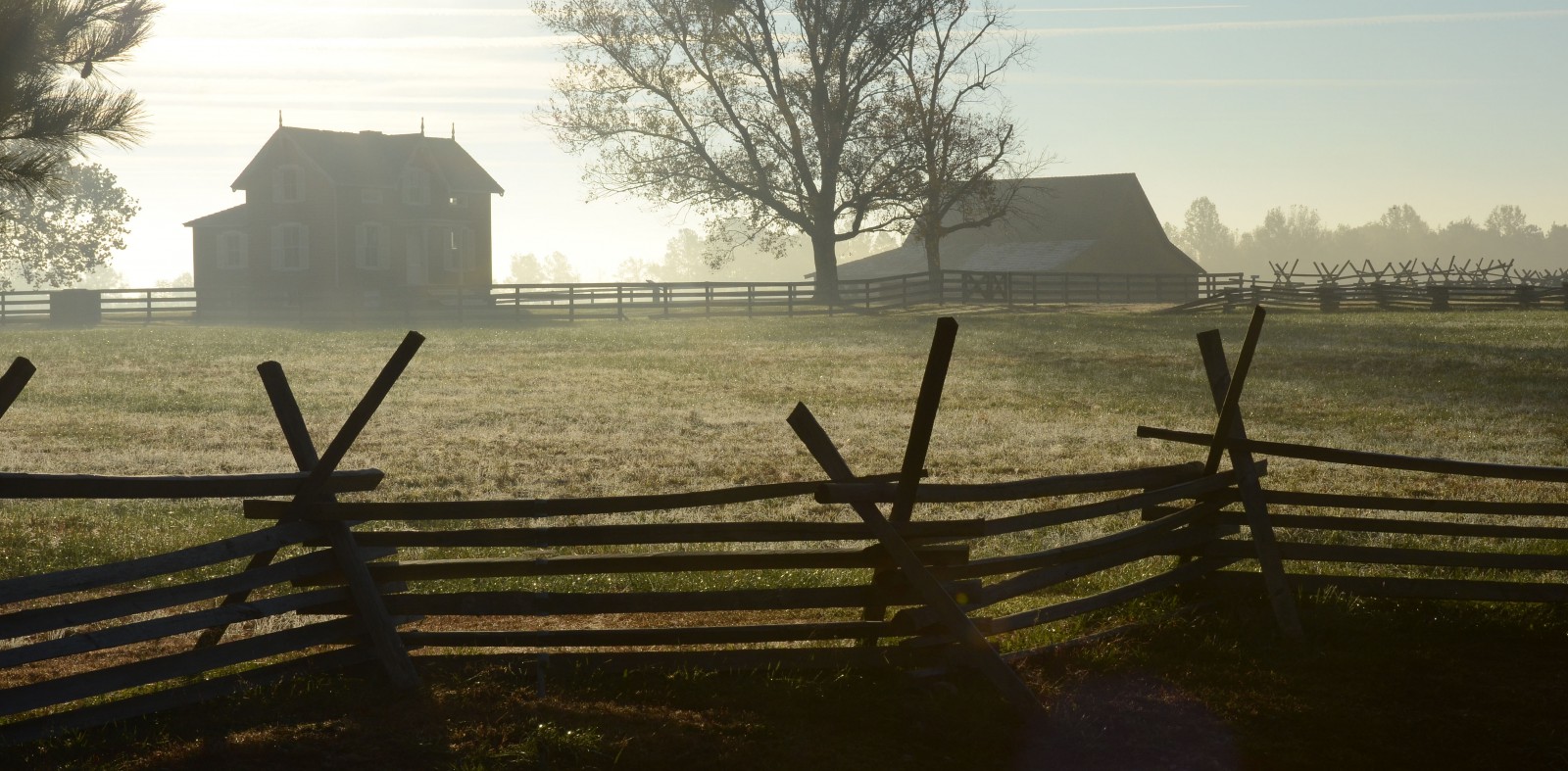 The 59-acre Hart Farm and the 1859 Hart House opened to the public for daily touring in 2004. It is home to the Civil War Adventure Camp, Pamplin Historical Park’s exciting immersion learning experience. The Hart Farm can be accessed by the ½-mile extension of the Breakthrough Trail.
The 59-acre Hart Farm and the 1859 Hart House opened to the public for daily touring in 2004. It is home to the Civil War Adventure Camp, Pamplin Historical Park’s exciting immersion learning experience. The Hart Farm can be accessed by the ½-mile extension of the Breakthrough Trail.
The Hart Farm witnessed fighting on two occasions during the Petersburg Campaign. On the third day of the Battle of Peebles’ Farm, October 2, 1864, portions of Winfield Scott Hancock’s Union 2nd Corps assaulted the rudimentary Confederate fortifications that spanned the Hart property. The sector was defended by the 4th North Carolina Cavalry, fighting dismounted, which was reinforced by the Tar Heel brigade of William MacRae. This combined force shared in the repulse of the Union attack.
Six months later, on the morning of April 2, 1865, Ulysses S. Grant ordered a general assault against Lee’s defensive position surrounding Petersburg. The assault’s initial breakthrough occurred at the site of Pamplin Historical Park when Horatio Wright’s 6th Corps swarmed over the thinly-manned Confederate line. Truman Seymour’s division, on the left of the 6th Corps assault, stormed the works that crossed the Hart Farm. The breakthrough led to Lee’s evacuation of Petersburg that night and his retreat westward, which ended one week later at Appomattox Court House.
The original Hart farm house still stands on the property and has been returned to its original exterior appearance. Wayside exhibits explain the farm’s important history as the site of two Civil War battles. The interior of the Hart House is not open to the public.

